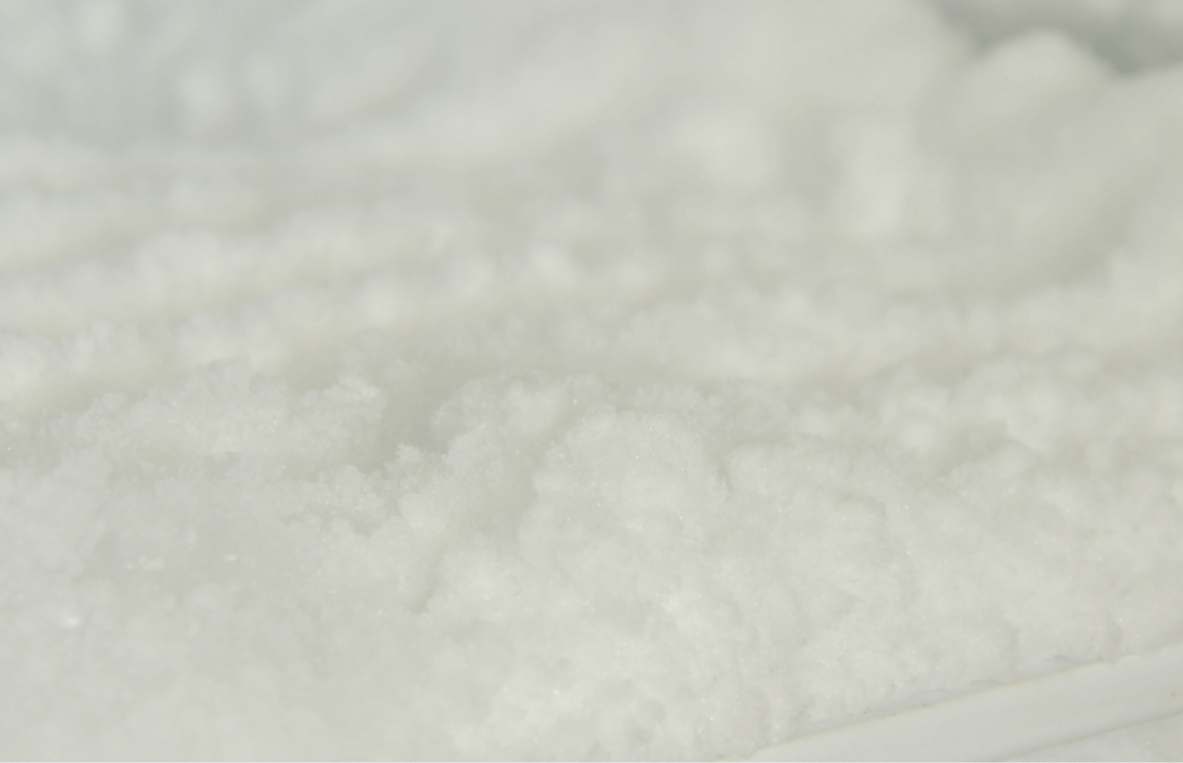Why Ice Builds Up in Commercial Freezers (and how you can prevent it)

Having ice build-up in commercial freezers not only looks unattractive, but it can also damage your refrigeration unit. Here are several reasons why ice builds up in commercial freezers and how to help prevent it from happening.
How Ice Buildup Begins
There are several ways the ice can start to accumulate and cause an icing issue. Moisture infiltration is the number one culprit of ice accumulation. Moisture can infiltrate a cold room through the introduction of warm product, excessive door openings, or poorly sealing equipment. Once that moisture mixes with cold air, the water vapor will condense and migrate to the coldest point in the room, where it will collect and begin to form ice.
Another opportunity for ice buildup is through an older defrost control cycle. Traditional defrost controllers power heaters and keeps them on until the signal is given to terminate, either based on time or temperature. This type of defrost removes frost from the refrigeration coils, but sometimes your freezer’s defrost termination mode kicks back in too quickly, causing fans to start while there’s still moisture on the coil surface. As that moisture is blown across the freezer, it sticks to the ceiling, walls, floor, and door where it also begins an ice buildup.
If you have entered a freezer and noticed it a bit cloudy, then you have experienced a third opportunity for ice build-up, which is known as a fogging effect. When the resistance heaters’ surfaces heat up, they can reach temperatures of 300° F. Dripping water that encounters the hot surfaces instantly evaporates, creating a fog in the room. As the fog exits the coil, it will condense, forming moisture droplets that disperse throughout the room. Once those droplets freeze, ice will begin forming, making for a harder cleanup and possibly freeze burn to food being stored.
Removing Ice Buildup
Removing the ice buildup in a commercial freezer can be a time-consuming task. Ice can be removed by scraping off the buildup by hand or by using some rubbing alcohol with a heated cloth to rub over the ice. Both of these methods would take a large amount of labor to accomplish in a commercial sized freezer though. The freezer can also be defrosted, but not only would this take time and clean up, but also would put the freezer out of commission for an extended period of time, affecting your inventory. The best way to remove ice buildup is to prevent it from ever occurring.
Controlling The Defrost Cycle With Eco-Smart
Having Eco-Smart control the defrost cycle will dramatically impact cold storage room operations. Eco-Smart works differently than traditional defrost systems. Instead of applying power to the heaters for the duration of the cycle, Eco-Smart carefully monitors the coil’s temperature throughout the defrost cycle. When the temperature of the coil reaches a predetermined point, the heaters are turned off through the controller, allowing the heat from the elements to be transferred to the coil. As the heat dissipates, the heaters are re-powered to continue the defrosting process. Remember the fogging effect? Eco-Smart’s advanced algorithms regulates power to the heaters to prevent overheating, preventing the fogging effect from happening.
By managing the frost level of the coil and maintaining a consistent defrost cycle, Eco-Smart can cool the freezer space in the same time as a traditional cycle, but while using 40% less energy. Easily retrofitted into your current walk-in freezer, Eco-Smart will save your business time, money, labor, and energy.
Are you struggling with your commercial refrigeration unit and want to learn how to save time, energy costs, and labor? Watch our Eco-Smart video to learn more.




